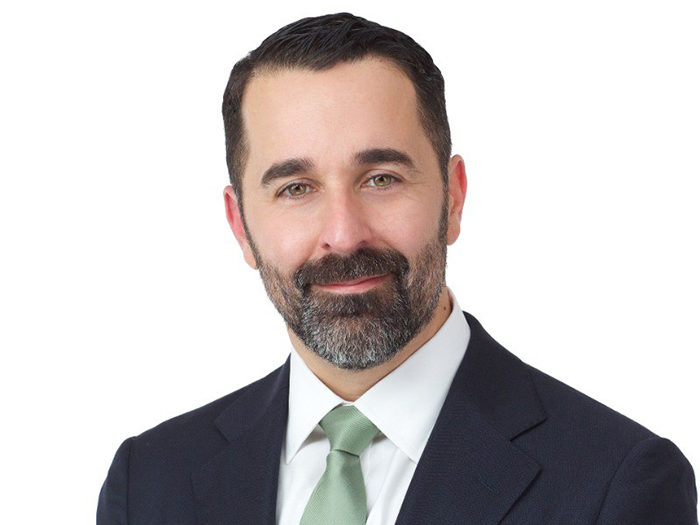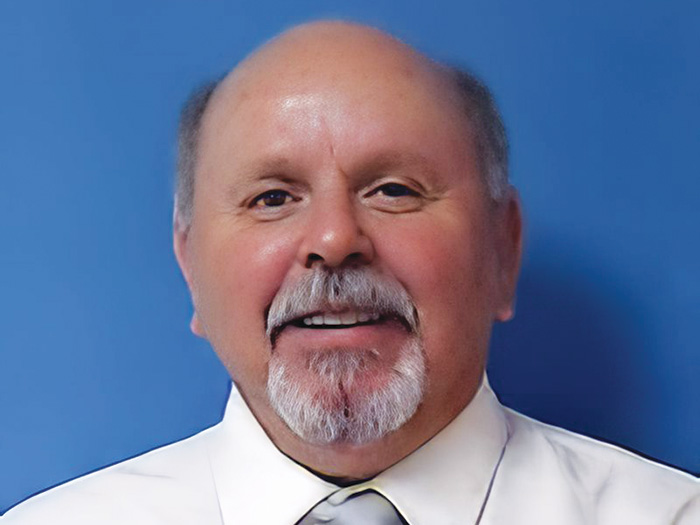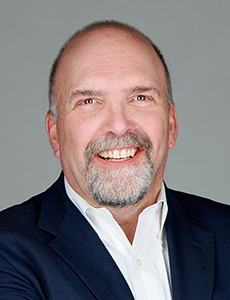13 Questions for Swiss Re’s Kera McDonald

Risk & Insurance caught up with Kera McDonald, chief underwriting officer for Swiss Re Corporate Solutions. What follows is a transcript of that conversation, edited for length and clarity.
Risk & Insurance: For starters, congratulations on holding the position that you do in the industry. We’re curious about what opportunities you see ahead for your group this year.
Kera McDonald: I’d point to three areas.
Over the past few years, we’ve built up our capabilities around international programs and continue to grow our international program lead portfolio with all our distribution team. We’re working with customers to make that happen, and it’s fun and exciting.
Another area we are heavily involved in that’s also a little bit different is that we are leaders in the parametric insurance market. We’re using our knowledge and sharing it with the reinsurance team on Nat CAT drivers. It’s rewarding to work with customers to construct something that really works for them, and we’re seeing an increased interest in parametric insurance solutions in today’s uncertain environment.
We also have a relatively new but growing area in structured fronting. This really helps customers choose which part of their risk they ultimately want to retain.
All three of these examples have the same intent at their core: to deliver something that responds to our customers’ needs.
R&I: All of that sounds interesting. Can you talk to us a little bit more about the parametric side, how it’s growing, what risks you’re seeing parametric coming into play for?
KM: These days, it’s significantly Nat CAT driven, which used to consist of mostly Japan earthquake, but now the use of parametrics is really spreading around the world. Today, we also write a lot of extreme-weather-triggered parametric insurance solutions. These can be temperature-driven and also wind-driven.
R&I: And the structured fronting you mentioned, is that for captives in the main?
KM: Correct. We brought in a team a couple of years ago to help to really build that up.
R&I: And how has that business been growing?
KM: It’s growing well. I think it fits very well with our DNA in servicing the large corporate risks and working with those managed customers to help them really understand what risk they would be keeping themselves and what ultimately gets passed on to reinsurance panels through us.
R&I: And when you look at the business, Kera, where do you see challenges? What obstacles do you have to overcome to achieve your goals?
KM: I think there are several challenges that the industry is dealing with, and I think the market will continue to grapple with those for the rest of the year. The first one is supply chain. The various recent Nat CAT events, the global pandemic and the geopolitical instability have all led to shortages in commodities, which slows down economies and also contributes to inflation.
Inflation is the second area that I would point to as being a significant challenge.
According to the Swiss Re Institute, it’s set to ease in ’23 and ’24, but at the same time it will remain at a level that’s higher and more volatile than in the recent past. We need to make sure that inflationary pressures are accounted for in the products that we offer as an industry.
The other topic I would mention is Nat CAT exposure. With that inflation of the value of the assets that we cover, we need to make sure that we stay on top of the various exposures that are there for Nat CAT.
R&I: How difficult is the learning curve for insureds around proper valuations given that we’re looking at a lot of inflationary pressure, in property for example?
KM: I think there’s actually a fair amount of awareness there. It’s not one of those things that snuck up on people, because there was such a significant spike in inflation. I think people are quite aware of the issue.
I’d say it took insureds some significant back and forth with the brokers initially to get a handle on the issue, but now people are really on it.
I have a feeling that because it was such a swift change, it really brought the importance of proper valuations to the forefront of people’s minds.
R&I: So the awareness could have been beneficial even though it was painful in the short term, perhaps?
KM: It was very painful in the short term, yes.
R&I: We’d love to talk about the new faces or new talent that you’ve got your eye on. Are you willing to talk about folks on your team that are really rising stars that have caught your eye?
KM: I think it’s a type of person, rather than specific individuals. For me, I’m very focused on the underwriter of the future. When I say that, what I mean is that there is a data-savvy approach that really takes portfolio-level information and identifies forward-looking trends. That is not the way it used to be done.
It used to be you touched a whole lot of risks and you got a very well-educated gut feeling. You still need to have that feeling and knowledge as an underwriter, but the insights will come from a much more data-driven approach.
This will be even more important when you put it together with our interconnectedness. Everything these days is interconnected. Understanding what the data’s telling you across all the different inputs — that’s going to identify our top talent. If an underwriter can understand those things, those are our stars of the future.
R&I: Are you seeing that? Are you hopeful that you are hiring and seeing the talent that can take that idea of a data-driven approach and succeed with it?
KM: Yes. Over the last couple of years, we’ve taken a very deliberate approach to working with our portfolio owners.
A portfolio owner is a designated role within our group. We’re working with them to view things on a portfolio level. It’s not a deal-by-deal level for them in most cases.
We’re working with them in order to make sure that we have clean data, and that we also have consistently defined data sets, so that they can talk to the reserving actuaries and the costing actuaries about it.
We all know it’s the same set of data that we’re talking about, and increasing the interaction with the actuaries has really elevated the discussion between those portfolio owners.
They learn from each other in that discussion. It’s what we call the smart circle, and that has really brought some of those discussions to a different level.
R&I: That sounds great. Speaking of talent, we perceive recruiting and retaining talent to be an issue across the industry. What does that challenge look like from your perspective?
KM: Swiss Re’s company vision is to make the world more resilient. I believe that resonates with a lot of people, whether they are current employees or potential future colleagues.
This idea of really helping the world if the worst were to happen — that brings a sense of purpose into what we do, and I think there’s a lot of people here that are drawn to the insurance industry because of that purpose.
We are a shock absorber for society, which is a noble purpose.
We have successfully developed and rolled out a DEI strategy and have launched an inclusion experience program. We’ve established, for example, gender and race representation targets, which is a major step forward.
We’ve also had the “Own the Way You Work” program for a number of years now. In practice, what that means is that people can choose how they perform their tasks and where they perform their tasks as long as they meet customer needs. That flexible working is a benefit to all employees and it’s important if we want to be inclusive and retain and attract talent.
Within our group, we’ve increased our focus on our onboarding process as far as how we bring people in and how we make them feel included within our organization, and we’re also pulling in a very diverse set of people.
We are pulling in people from the insurance industry, as opposed to our old reinsurance focus, and we also pulled in 20% of our people from the tech space. I think improving this diversity of thought in our workforce composition has been an important thing.
And we’re also making sure that there’s interaction between the leaders and the new joiners at the beginning, so our regional leaders are in monthly contact with those new joiners, which really helps. I’d say that that line of communication helps them feel a part of what’s going on.
Additionally, we’re increasing internal career moves. Swiss Re is a large group with a lot of opportunities, and if we look at my history over time, I’ve done many things within the Swiss Re group.
We’re offering people the chance to go and experience different roles across Swiss Re, and we need to focus on that internal movement. We also have a very specific focus on succession plans. They all need to be inclusive, but we also need to prepare people for those succession opportunities, and we’re putting some significant effort into that as well.
R&I: We’re very interested in the predict and prevent side of the use of technology, and I was curious: As you look at insureds as they try to address risk and protect their balance sheets, are you seeing examples where predict and prevent technology is really becoming a difference-maker for insureds?
KM: Yeah, the one that is a focus for us is our RDS, or Risk Data and Services platform, the goal of which is to help companies become more resilient by making better data-driven business decisions.
RDS helps companies build a digital twin of their assets to get an accurate overview of their exposure. With this virtual representation of their business, corporates can create simulations based on real-world scenarios and access risk insights.
They can analyze all the way down to a landslide risk — today and in the future — on a critical road taken by one of their suppliers. By simulating potential disruptions, companies are able to uncover and prepare for hidden vulnerabilities across their entire supply chain network.
A key benefit of the platform is that it allows companies to store their site data in their own private environment yet securely share the risk insights generated from the processing of their raw data.
This unique setup of the RDS platform allows the supply chain participants to be mutually beneficial without sharing their commercially sensitive data with each other. They can share data with us only if they choose to, and we can work together to find ways to mitigate the key risks identified.
R&I: The whole idea of the digital twin is really interesting. Can you quantify the take-up you’re seeing of that among your clients?
KM: We have some significant customers that have signed up for it.
As far as prediction and prevention go, the RDS solution is the main one that we’re working on right now.
R&I: You mentioned that you have benefited from doing a lot of different roles within Swiss Re during your career. When you look back, which of those roles or maybe the relationships or circumstances really impacted you, really propelled your career and made an impression on you?
KM: For me, it has been a long and interesting adventure within Swiss Re. I have been here almost 21 years. The points in time or the experiences that have made the most difference for me have really been the ones where I have been thrown into a completely new area, a new function, some place that took me outside my comfort zone.
That broad learning experience helps me to connect these dots in this interconnected world we were talking about. That idea of really seeing across the different elements of our customer base and the various functions internally has been the thing that has made the difference for me.
So I always encourage everyone to go out and try something completely new, because it just broadens your horizons in amazing ways. &










